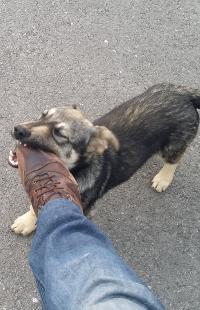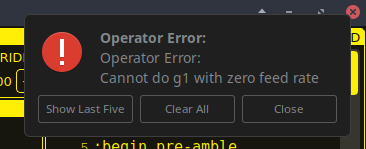Search Results (Searched for: )
- Cooped-Up
- Cooped-Up
25 Oct 2025 18:46
Replied by Cooped-Up on topic Maho MH800e Retrofit Project
Maho MH800e Retrofit Project
Category: Milling Machines
- abs32
- abs32
25 Oct 2025 18:42 - 26 Oct 2025 13:15
Replied by abs32 on topic how to get rid of the probed dumping non-probe mode error?
how to get rid of the probed dumping non-probe mode error?
Category: Advanced Configuration
- snowgoer540

25 Oct 2025 18:10
Replied by snowgoer540 on topic PlasmaC Fatal Error Message
PlasmaC Fatal Error Message
Category: Plasmac
- snowgoer540

25 Oct 2025 18:09
Replied by snowgoer540 on topic PlasmaC Fatal Error Message
PlasmaC Fatal Error Message
Category: Plasmac
- tommylight

25 Oct 2025 17:12
Replied by tommylight on topic Tipps für aktuelle LinuxCNC Hardware gesucht
Tipps für aktuelle LinuxCNC Hardware gesucht
Category: Deutsch
- djdock99
- djdock99
25 Oct 2025 17:10
Replied by djdock99 on topic Maho MH800e Retrofit Project
Maho MH800e Retrofit Project
Category: Milling Machines
- Hakan
- Hakan
25 Oct 2025 16:35
Replied by Hakan on topic Stepper online A6 Servo motor as Spindle motor
Stepper online A6 Servo motor as Spindle motor
Category: General LinuxCNC Questions
- melayate
- melayate
25 Oct 2025 16:30
Mesa7i96s and Postep60-250? was created by melayate
Mesa7i96s and Postep60-250?
Category: General LinuxCNC Questions
- Cooped-Up
- Cooped-Up
25 Oct 2025 16:30
Replied by Cooped-Up on topic Maho MH800e Retrofit Project
Maho MH800e Retrofit Project
Category: Milling Machines
- MaHa
- MaHa
25 Oct 2025 16:05
Replied by MaHa on topic linuxcnc.command().mdi() vs .program_open()
linuxcnc.command().mdi() vs .program_open()
Category: General LinuxCNC Questions
- abs32
- abs32
25 Oct 2025 15:58 - 25 Oct 2025 16:00
Replied by abs32 on topic how to get rid of the probed dumping non-probe mode error?
how to get rid of the probed dumping non-probe mode error?
Category: Advanced Configuration
- meister
- meister
25 Oct 2025 15:37
Replied by meister on topic Tipps für aktuelle LinuxCNC Hardware gesucht
Tipps für aktuelle LinuxCNC Hardware gesucht
Category: Deutsch
- DerKlotz
- DerKlotz
25 Oct 2025 15:08 - 30 Oct 2025 13:22
Replied by DerKlotz on topic XHC-WHB04B-4 error during compile
XHC-WHB04B-4 error during compile
Category: Advanced Configuration
- scsmith1451

25 Oct 2025 15:08
Replied by scsmith1451 on topic linuxcnc.command().mdi() vs .program_open()
linuxcnc.command().mdi() vs .program_open()
Category: General LinuxCNC Questions
- tommylight

25 Oct 2025 14:39
Replied by tommylight on topic Tipps für aktuelle LinuxCNC Hardware gesucht
Tipps für aktuelle LinuxCNC Hardware gesucht
Category: Deutsch
Time to create page: 0.225 seconds

